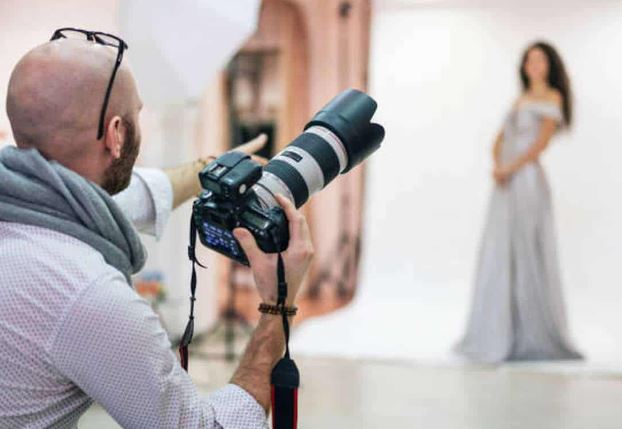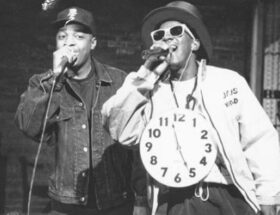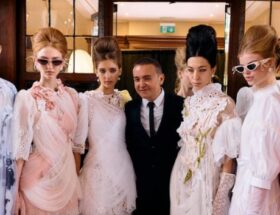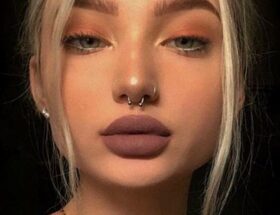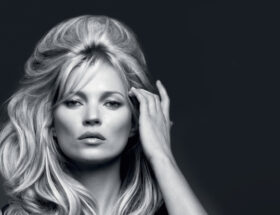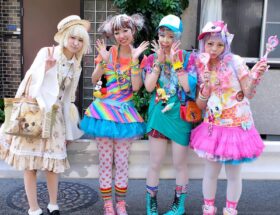Introduction
Fashion photography is a dynamic and captivating genre of photography that has evolved over the years to become a powerful visual medium, shaping the fashion industry and influencing our perceptions of beauty and style. In this 1000-word article, we will delve into the world of fashion photography, exploring its history, techniques, impact, and the visionaries who have left an indelible mark on this fascinating art form.
The Beginnings: Early Fashion Photography
Fashion photography, as we know it today, emerged in the late 19th century, parallel to the rise of fashion magazines and the mass production of clothing. Early fashion photographs were often simple studio portraits featuring models wearing the latest styles. These images, devoid of the dynamic storytelling we associate with modern fashion photography, primarily served as a means to showcase garments to potential buyers.
Edward Steichen: Pioneering Modern Fashion Photography
One of the earliest pioneers of modern fashion photography was Edward Steichen, whose work for Condé Nast publications like Vogue and Vanity Fair in the 1920s transformed the genre. Steichen’s photographs introduced a sense of narrative and elegance, elevating fashion photography to an art form. His use of natural light and innovative compositions brought a painterly quality to his work.
The Golden Age of Fashion Photography
The post-World War II era marked the golden age of fashion photography, with the likes of Richard Avedon, Irving Penn, and Horst P. Horst redefining the genre. These photographers, often working for major fashion magazines, embraced a more cinematic and dramatic approach to fashion photography.
Richard Avedon: Capturing Movement and Emotion
Richard Avedon’s photography captured the essence of his subjects, often featuring models in dynamic motion or expressing genuine emotions. His iconic image of Dovima with Elephants exemplifies his ability to blend high fashion with a touch of surrealism and narrative.
Irving Penn: Timeless Elegance and Precision
Irving Penn’s fashion photography was characterized by its precision and timeless elegance. His minimalist approach, often featuring simple backdrops and stark lighting, allowed the clothing to take center stage. His work for Vogue spanned decades and left an indelible mark on the industry.
Horst P. Horst: Mastering Light and Shadow
Horst P. Horst’s mastery of light and shadow created iconic images of elegance and sensuality. His photograph of a Mainbocher Corset, with its play of light and contour on the model’s body, remains an enduring symbol of fashion photography’s ability to elevate clothing to art.
The Vogue Era: Fashion Photography in Magazines
Magazines like Vogue, Harper’s Bazaar, and Elle played a pivotal role in shaping the narrative of fashion photography. These publications featured the work of renowned photographers and allowed fashion photography to reach a wider audience.
1960s to 1980s: Fashion Photography Gets Experimental
The 1960s ushered in an era of experimentation in fashion photography. Photographers like David Bailey, Helmut Newton, and Guy Bourdin challenged conventions with their provocative and unconventional imagery. Bailey’s documentary-style photography captured the energy of the Swinging Sixties, while Newton’s provocative and often controversial work pushed the boundaries of fashion photography.
Contemporary Fashion Photography: A Multifaceted Landscape
Fashion photography in the 21st century has evolved into a multifaceted and dynamic field, thanks in part to the democratization of photography through digital technology and social media. Today, fashion photography encompasses a wide range of styles and approaches, from high-end editorial spreads to street style photography and influencer-driven content.
High Fashion Editorials
High fashion editorials continue to feature the work of renowned photographers like Mario Testino, Steven Meisel, and Annie Leibovitz. These editorials often aim to tell a story or convey a specific theme while showcasing designer clothing and accessories.
Street Style Photography
Street style photography has gained prominence in the age of social media. Photographers capture candid moments of individuals on the streets, highlighting their unique and personal fashion choices. Street style photography has become an influential part of the fashion industry, offering inspiration and insight into real-world fashion trends.
Influencer and Social Media Photography
The rise of fashion influencers and social media platforms like Instagram has transformed the landscape of fashion photography. Influencers curate their own content, often blurring the lines between professional and amateur photography. They offer a more relatable and diverse perspective on fashion, challenging traditional beauty standards and showcasing a wide range of personal styles.
Techniques in Fashion Photography
Fashion photography requires a blend of technical skill and creative vision. Here are some key techniques employed by fashion photographers:
- Lighting: Lighting is paramount in fashion photography. Natural light, studio lighting, and creative use of shadows can shape the mood and highlight the clothing.
- Composition: Composition is the foundation of a compelling image. Photographers consider elements such as framing, balance, and the rule of thirds to create visually engaging photographs.
- Posing and Direction: Photographers often work closely with models to achieve the desired poses and expressions that convey the mood and narrative of the shoot.
- Styling: Styling involves selecting clothing, accessories, and props to create a cohesive and visually striking look. It plays a crucial role in conveying the story or theme of a fashion shoot.
- Post-Production: Editing and retouching are essential steps in fashion photography. Photographers use software like Adobe Photoshop to enhance and refine their images, achieving the desired look and mood.
Impact of Fashion Photography
Fashion photography wields significant influence over our perceptions of beauty, style, and culture. It has the power to shape trends, challenge norms, and provoke thought. Some of the ways fashion photography impacts society include:
- Setting Trends: Fashion photography often introduces new styles and trends to the public, influencing consumer choices and the fashion industry.
- Cultural Representation: Fashion photography has the ability to celebrate diversity and challenge stereotypes by featuring models of different ethnicities, body types, and genders.
- Body Positivity: The fashion industry’s shift towards body positivity and inclusivity is partially driven by fashion photography that embraces diverse beauty standards.
- Artistic Expression: Fashion photography blurs the line between commercial and fine art, creating visually captivating images that are admired for their aesthetic value.
- Storytelling: Many fashion editorials tell stories and convey emotions through imagery, creating a deeper connection between the audience and the fashion brand or publication.
Conclusion
Fashion photography is a dynamic and evolving art form that has the power to shape our perceptions of style, beauty, and culture. From its beginnings as a means to showcase clothing to its current role in setting trends, challenging norms, and celebrating diversity, fashion photography has come a long way. Whether captured on the streets, in the studio, or shared on social media, fashion photography continues to be a visual language that tells stories, evokes emotions, and inspires creativity in the world of fashion.
